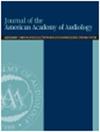Evaluation of Potential Benefits and Limitations of Noise Management Technologies for Children with Hearing Aids.
IF 1
4区 医学
Q3 AUDIOLOGY & SPEECH-LANGUAGE PATHOLOGY
引用次数: 0
Abstract
BACKGROUND Children with hearing loss frequently experience difficulty understanding speech in the presence of noise. Although remote microphone systems are likely to be the most effective solution to improve speech recognition in noise, the focus of this study centers on the evaluation of hearing aid noise management technologies including directional microphones, adaptive noise reduction (ANR), and frequency-gain shaping. These technologies can improve children's speech recognition, listening comfort, and/or sound quality in noise. However, individual contributions of these technologies as well as the effect of hearing aid microphone mode on localization abilities in children is unknown. PURPOSE The objectives of this study were to (1) compare children's speech recognition and subjective perceptions across five hearing aid noise management technology conditions and (2) compare localization abilities across three hearing aid microphone modes. RESEARCH DESIGN A single-group, repeated measures design was used to evaluate performance differences and subjective ratings. STUDY SAMPLE Fourteen children with mild to moderately severe hearing loss. DATA COLLECTION AND ANALYSIS Children's sentence recognition, listening comfort, sound quality, and localization were assessed in a room with an eight-loudspeaker array. RESULTS AND CONCLUSION The use of adaptive directional microphone technology improves children's speech recognition in noise when the signal of interest arrives from the front and is spatially separated from the competing noise. In contrast, the use of adaptive directional microphone technology may result in a decrease in speech recognition in noise when the signal of interest arrives from behind. The use of a microphone mode that mimics the natural directivity of the unaided auricle provides a slight improvement in speech recognition in noise compared with omnidirectional use with limited decrement in speech recognition in noise when the signal of interest arrives from behind. The use of ANR and frequency-gain shaping provide no change in children's speech recognition in noise. The use of adaptive directional microphone technology, ANR, and frequency-gain shaping improve children's listening comfort, perceived ability to understand speech in noise, and overall listening experience. Children prefer to use each of these noise management technologies regardless of whether the signal of interest arrives from the front or from behind. The use of adaptive directional microphone technology does not result in a decrease in children's localization abilities when compared with the omnidirectional condition. The best localization performance occurred with use of the microphone mode that mimicked the directivity of the unaided auricle.儿童助听器噪音管理技术的潜在效益和局限性评估。
背景:有听力损失的儿童在有噪音的环境下经常会遇到理解语言的困难。尽管远程麦克风系统可能是改善噪声环境下语音识别的最有效解决方案,但本研究的重点集中在助听器噪声管理技术的评估上,包括定向麦克风、自适应降噪(ANR)和频率增益整形。这些技术可以提高儿童的语音识别能力、听力舒适度和/或噪音中的音质。然而,这些技术的个人贡献以及助听器麦克风模式对儿童定位能力的影响尚不清楚。本研究的目的是:(1)比较五种助听器噪音管理技术条件下儿童的语音识别和主观感知;(2)比较三种助听器麦克风模式下儿童的定位能力。研究设计采用单组、重复测量设计来评估表现差异和主观评分。研究样本:14名轻度至中度听力损失的儿童。数据收集和分析在一个有8个扬声器阵列的房间里评估儿童的句子识别、听力舒适度、音质和定位。结果与结论使用自适应定向麦克风技术,当感兴趣的信号来自前方,与竞争噪声在空间上分离时,儿童在噪声环境下的语音识别能力得到提高。相比之下,使用自适应定向麦克风技术可能会导致语音识别在噪声中下降,当感兴趣的信号从后面到达。当感兴趣的信号从后面到达时,使用模仿无辅助耳廓自然指向性的麦克风模式,与全方向使用相比,在噪声中语音识别略有改善,并且语音识别的衰减有限。使用ANR和频率增益整形对儿童在噪声环境下的语音识别没有影响。使用自适应定向麦克风技术、ANR和频率增益整形,可以提高儿童的听力舒适度、在噪音中理解语音的感知能力和整体听力体验。孩子们更喜欢使用这些噪音管理技术,而不管感兴趣的信号是从前面还是从后面来的。与全向麦克风相比,使用自适应定向麦克风技术并不会导致儿童定位能力下降。使用模仿无辅助耳廓方向性的传声器模式时,定位效果最好。
本文章由计算机程序翻译,如有差异,请以英文原文为准。
求助全文
约1分钟内获得全文
求助全文
来源期刊
CiteScore
3.10
自引率
0.00%
发文量
46
审稿时长
6-12 weeks
期刊介绍:
The Journal of the American Academy of Audiology (JAAA) is the Academy''s scholarly peer-reviewed publication, issued 10 times per year and available to Academy members as a benefit of membership. The JAAA publishes articles and clinical reports in all areas of audiology, including audiological assessment, amplification, aural habilitation and rehabilitation, auditory electrophysiology, vestibular assessment, and hearing science.

 求助内容:
求助内容: 应助结果提醒方式:
应助结果提醒方式:


